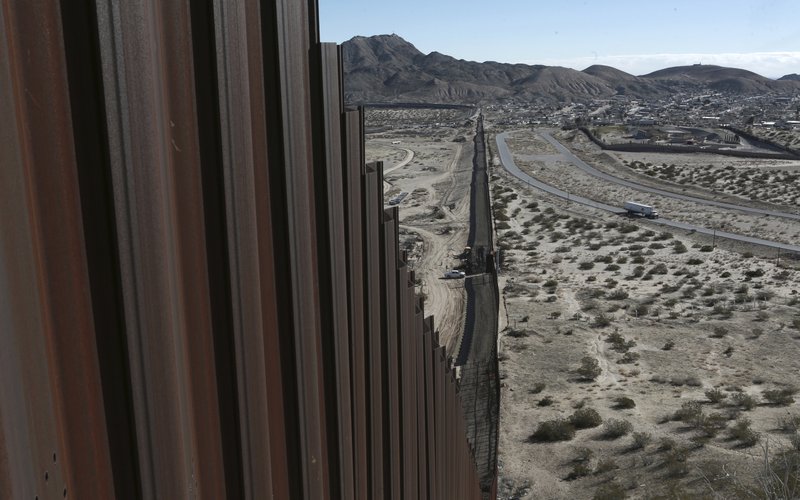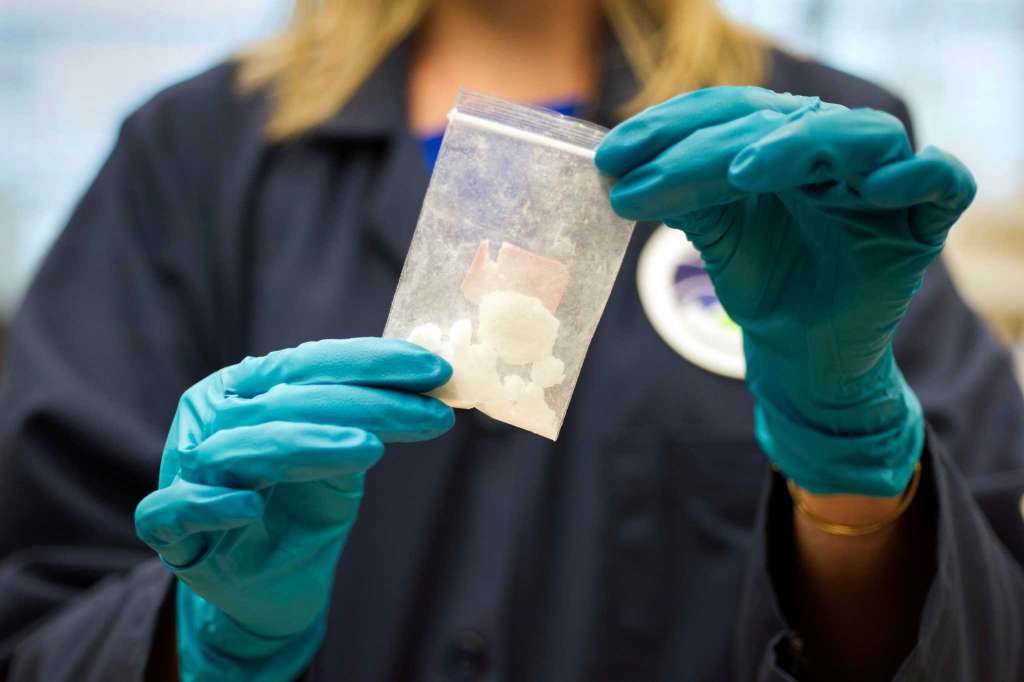A look at border security, fencing as Donald Trump announces wall

President Donald Trump announced his long-awaited plan Wednesday to build a wall on the 1,954-mile U.S. border with Mexico, calling for its “immediate construction” to stop illegal immigration, drug and human trafficking and acts of terrorism. He is not the first president to embark on an aggressive buildup on the border. Here’s a look at what is already there: SEMI-FORTIFIED BORDER One-third of the U.S.-Mexico border, or 653 miles, is already studded with fence in a potpourri of styles, from menacing barriers to those that can be easily hopped. The barriers arose from the Secure Fence Act passed in the last year of the George W. Bush administration. In California, the fence climbs out of the Pacific. Its meanest stretch, three layers thick, separates San Diego from Tijuana. Half those 14 miles are topped by razor wire. In dunes to the east, a “floating fence” of 16-foot steel tubes can be raised or lowered as sands shift. Almost all of Arizona’s border is fenced, although the deterrence effect for human-and drug smugglers is constantly questioned. Cities such as Yuma and Nogales have high fencing but stretches of the remote desert have things like posts, wire-mesh and livestock fencing that can halt vehicles but people can hop. Vehicular fencing marks most of New Mexico’s 180-mile border. Nearly all Texas’ 1,250-mile border is fence-free, the winding Rio Grande the only barrier. The state has just 110 miles of fences and fortified concrete levees . Mountains, rivers and other natural barriers are expensive to build on and have been largely left alone . One stretch in Texas’ Hidalgo County along the Rio Grande cost $10 million a mile. SURVEILLANCE TECH Politicians along the border, even GOP lawmakers in Washington, have endorsed surveillance technology as offering more security for the buck than fence or wall. The Border Patrol is expanding the use of eye-in the-sky tethered dirigibles that scan the horizon as they float on cables and of camera-studded towers. Its high-flying Predator drones have logged more than 3,000 hours a year since 2011. Neither technology nor maintenance of existing fence comes cheap. The government spent $450 million last fiscal year on “Border Security Fencing, Infrastructure, and Technology.” And a major Boeing-led project in Arizona called the “SBINet,” whose network was supposed to marshal surveillance monitoring, proved a boondoggle, costing taxpayers $1 billion before it was canceled in 2010. PEOPLE CROSSING Not a single person involved in a terrorist act in the United States is known to have illegally entered the country from Mexico along the southwest border. Apprehensions of people at the border are far down from a peak of 1.6 million in 2000 to 408,870 in the year ending Sept. 30, with net immigration by Mexicans at zero. More Central Americans were apprehended illegally crossing the border than Mexicans last year. The Central Americans are fleeing a humanitarian crisis — the world’s highest murder rates and abject poverty. Most surrender at the border and seek asylum. The Border Patrol has bulked up, too, from about 9,500 agents in 2004 to some 17,500 today. The locals, meanwhile, mostly don’t want a wall. A May poll in U.S. southwest border cities found 72 percent against the idea. The Cronkite News-Univision-Dallas Morning News poll had a 2.6 percent error margin DRUG SMUGGLING Most drugs entering the United States sneak through legal ports of entry — not through fence-less wilds. They hide in concealed compartments of passenger vehicles or commingled with legitimate goods in tractor-trailers, the U.S. Drug Enforcement Administration says. The U.S. Border Patrol says it seized 1.3 million pounds of marijuana, most of it in Arizona, and 4,180 pounds of cocaine, most split between the San Diego sector and Texas’ Rio Grande valley, in the most recent fiscal year. Smugglers have been tunneling under fences for years, primarily in California and Arizona where marijuana is the payload. Authorities also occasionally find ladders constructed a foot higher than existing fence as creative smugglers find new ways in — and under. And since 1990, the DEA says, 225 border tunnels have been discovered. Off-road vehicles and backpackers are also used, but that tends to require scouts. Ultralight aircraft and drones have also made cross-border airdrops, mostly of marijuana. Republished with permission of The Associated Press.
5 things to know about America’s synthetic-opioid epidemic

Government scientists say they’re seeing the emergence of a new class of deadly drugs built to mimic the potent prescription painkiller fentanyl. What you need to know: — DOZENS OF VARIANTS The U.S. Drug Enforcement Administration‘s Special Testing and Research Laboratory has around 50 fentanyl-related compounds in its drugs database. Regulators are trying to catch up. China has blacklisted 19 fentanyl-related molecules and is now considering adding four more to its list of controlled substances, including the weapons-grade carfentanil . — EASY TO ORDER It’s easy to source synthetic opioids online from Chinese vendors. Associated Press reporters identified more than a dozen companies offer to export fentanyl-like drugs. Some say they’d lie on customs forms, disguise packaging and even guarantee delivery. After Chinese officials warned vendors that one analog, carfentanil, is hazardous and shouldn’t be sold, vendors started marketing other opioids, like U-47700. — DISPUTE OVER SOURCE COUNTRY U.S. officials say casework and investigations show China is the main source of fentanyl-related drugs. But no U.S. agency has been able to produce comprehensive statistics. China says U.S. claims are unsubstantiated and has asked for more evidence. — MEXICAN CONNECTION Mexican drug cartels are profiting from the opioid trade. Nearly two-thirds of the 61 kilograms (134 pounds) of fentanyl seized by U.S. customs last year came from Mexico. Mexican authorities raided seven fentanyl labs in 2014, five of them in Sinaloa state, according to the office of Mexico’s attorney general. Mexican and U.S. authorities say those labs mainly use material imported from China to make the drugs. — GROWING DEMAND, AND DEATHS The proliferation of synthetic opioids feeds U.S. demand. Last year, U.S. authorities identified derivatives of fentanyl nearly 2,000 times, up from just 78 times in 2014. Unsuspecting users have been overdosing in record numbers on these poorly understood new chemicals, which are often cut into heroin or counterfeit pills. Deaths from synthetic opioids, including fentanyl and related molecules, more than tripled from 2013 to 2015, hitting 9,580 last year. — Sources: U.S. Drug Enforcement Administration, China’s National Narcotics Control Commission, U.S. Centers for Disease Control and Prevention. Republished with permission of the Associated Press.


